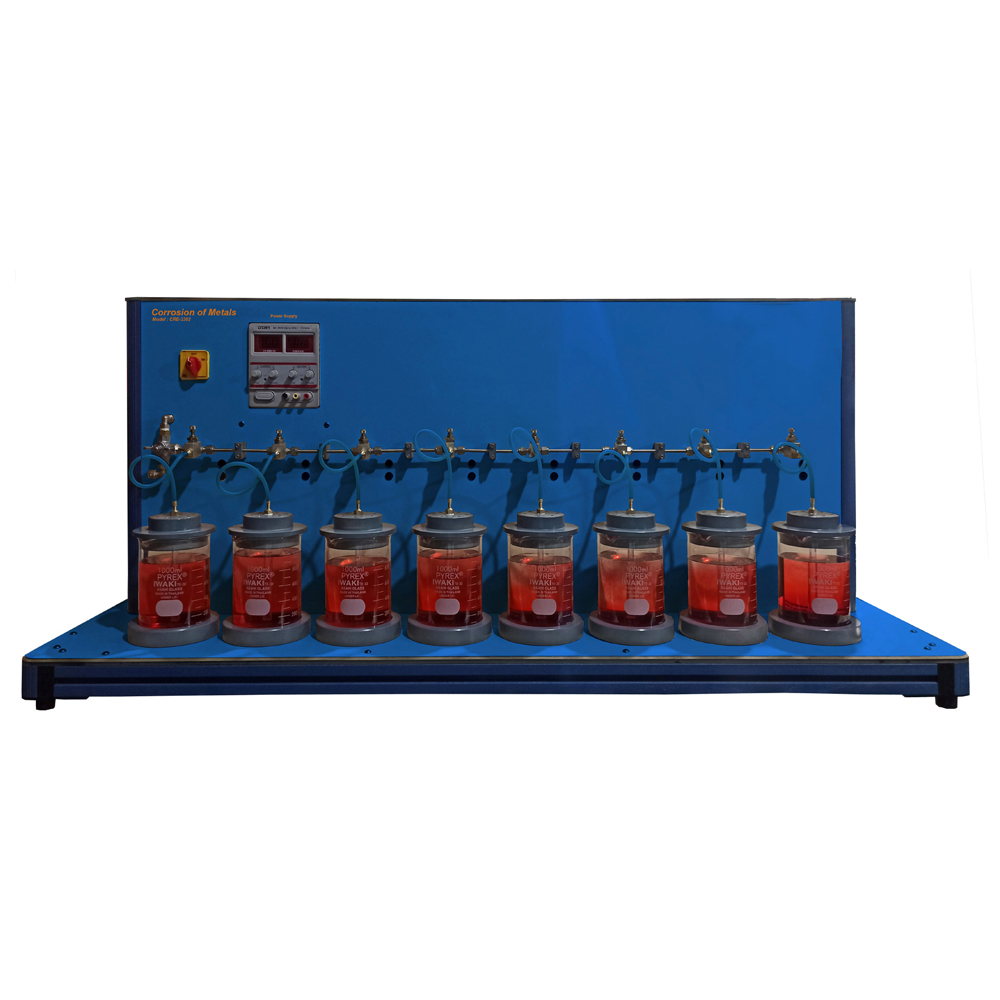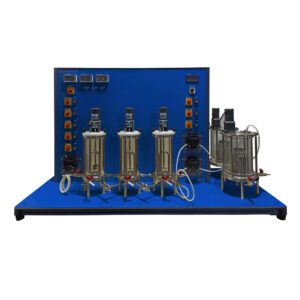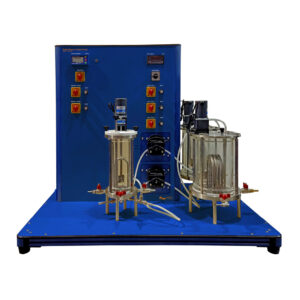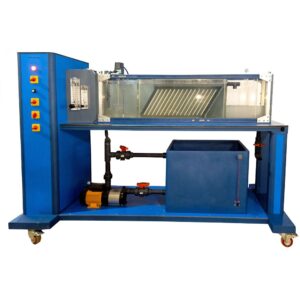The economic and technical costs of corrosion damage to metallic components are significant. This means that the topic of corrosion and corrosion protection is crucial to technical education. The equipment enables the simultaneous investigation of a number of variables that affect corrosion processes. This can be accomplished with eight glass jars. They enable the comparison of various materials in a variety of settings. We fill the jars with the necessary electrolyte solution. Each vessel’s lid can hold up to six samples, which are then submerged in the solution. In order to study the concept of sacrificial anodes and local components, specimens might be connected to an electrical conductor. A connection to an external voltage is possible with an adjustable power supply. This reverses the flow of precious and common metals in the local elements. The more basic metals corrode at a slower rate as a result. Whenever necessary, a pump introduces ambient air into the electrolyte solution. Each vessel’s gas flow rate can be customized using flow control valves. Additionally, additional gases from the lab may be injected into the electrolyte solution. The impact of the electrolyte solution on corrosion processes can be researched and compared using a pH meter.
Technical data
Electrolyte vessels
- Capacity: 1000mL
- Material: glass
Power pack
- Voltage: 0~30VDC
- Current: 0~5A
- Diaphragm pump: approx. 250L/h
Specimens
- Stainless steel, steel, copper, brass, aluminum x 5each
Measuring ranges
- pH value: 0~14
- Resolution: 0.01
Scope of Delivery
- 1 experimental setup
- 1 set of sample
- 1 instruction manual




